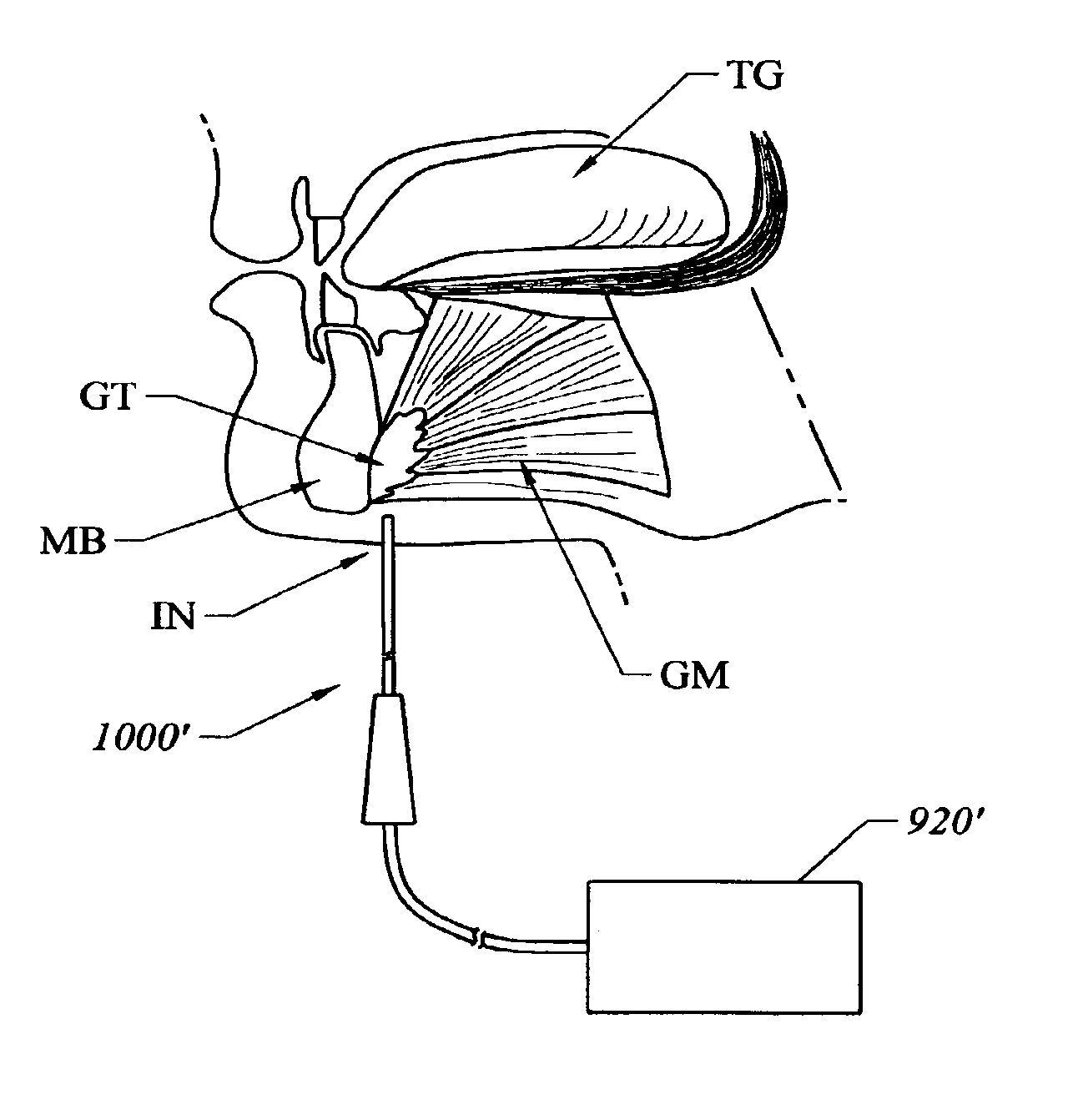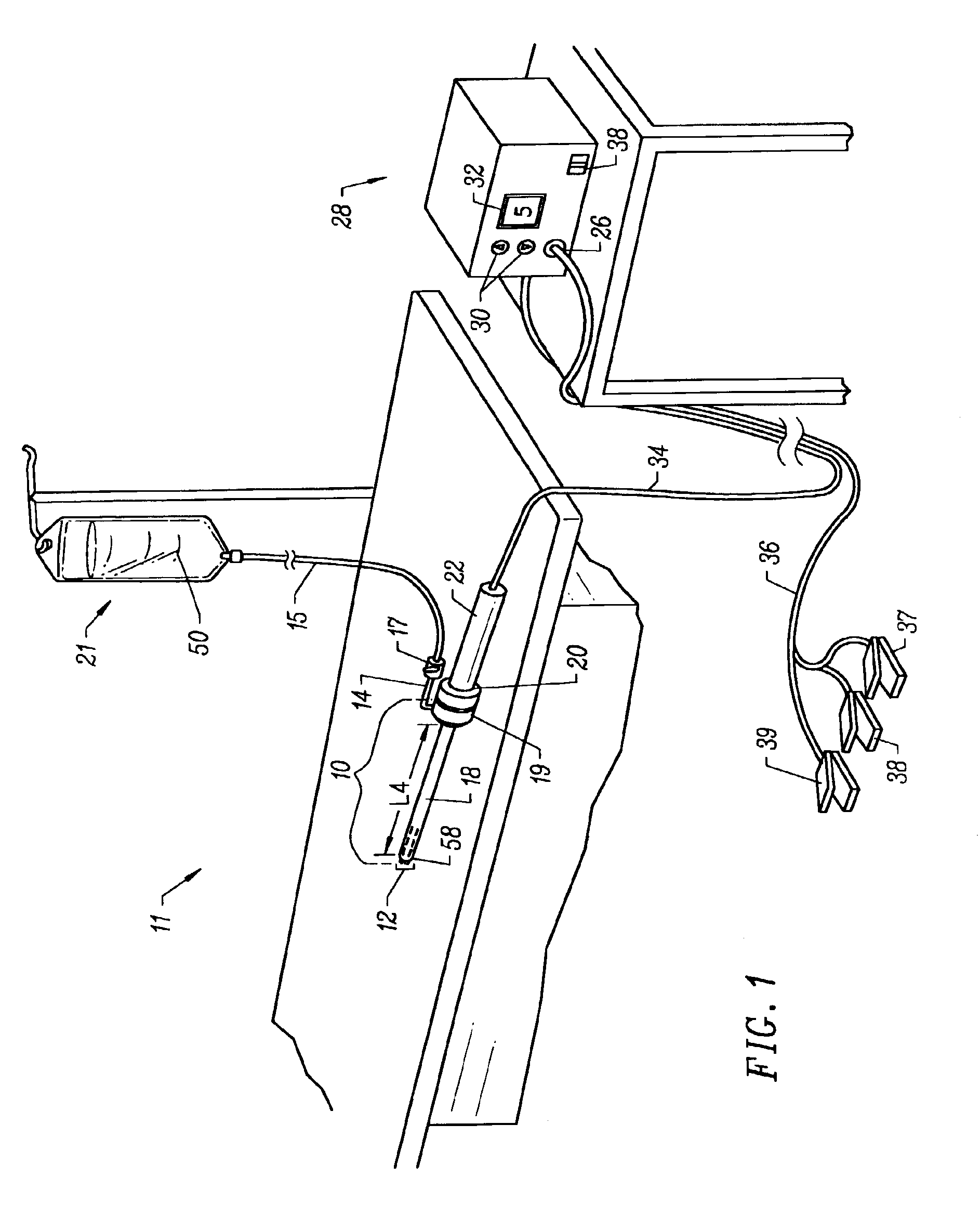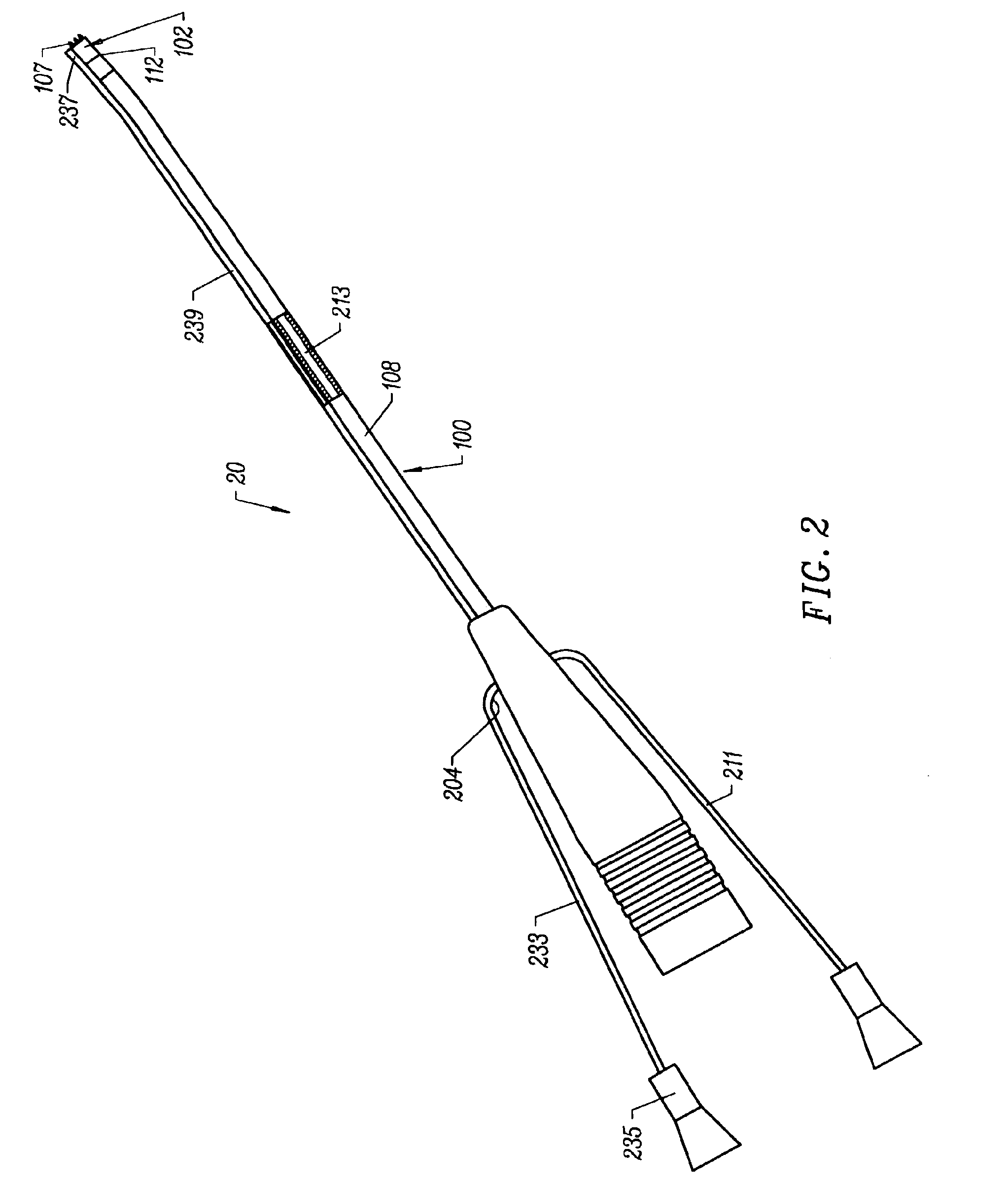Systems and methods for electrosurigical treatment of obstructive sleep disorders
a technology of obstructive sleep disorder and electrosurigical treatment, which is applied in the field of electrosurigy, can solve the problems of limited patient compliance with cpap devices, cumbersome measures, and inability to achieve complete effectiveness, and achieve the effects of shortening the genioglossus tendon, increasing the aperture of the upper airway, and increasing the genioglossus tendon
- Summary
- Abstract
- Description
- Claims
- Application Information
AI Technical Summary
Benefits of technology
Problems solved by technology
Method used
Image
Examples
Embodiment Construction
[0052]The present invention provides systems and methods for selectively applying electrical energy to a target location within or on a patient's body, particularly including tissue in the head and neck, such as the ear, esophagus, nasal cavity, sinuses, mouth, pharynx, larynx, or genioglossus. These procedures may be performed through the mouth or nose using speculae or gags, or using endoscopic techniques, such as functional endoscopic sinus surgery (FESS). Alternatively, such procedures may be performed through an incision in the region of the head or neck. Procedures of the invention may include the removal of swollen tissue, chronically-diseased inflamed and hypertrophic mucous linings, polyps and / or neoplasms from the various anatomical sinuses of the skull, the turbinates and nasal passages, in the tonsil, adenoid, epi-glottic and supra-glottic regions, and salivary glands, submucous resection of the nasal septum, excision of diseased tissue, tracheobronchial strictures, and ...
PUM
 Login to View More
Login to View More Abstract
Description
Claims
Application Information
 Login to View More
Login to View More - R&D
- Intellectual Property
- Life Sciences
- Materials
- Tech Scout
- Unparalleled Data Quality
- Higher Quality Content
- 60% Fewer Hallucinations
Browse by: Latest US Patents, China's latest patents, Technical Efficacy Thesaurus, Application Domain, Technology Topic, Popular Technical Reports.
© 2025 PatSnap. All rights reserved.Legal|Privacy policy|Modern Slavery Act Transparency Statement|Sitemap|About US| Contact US: help@patsnap.com



